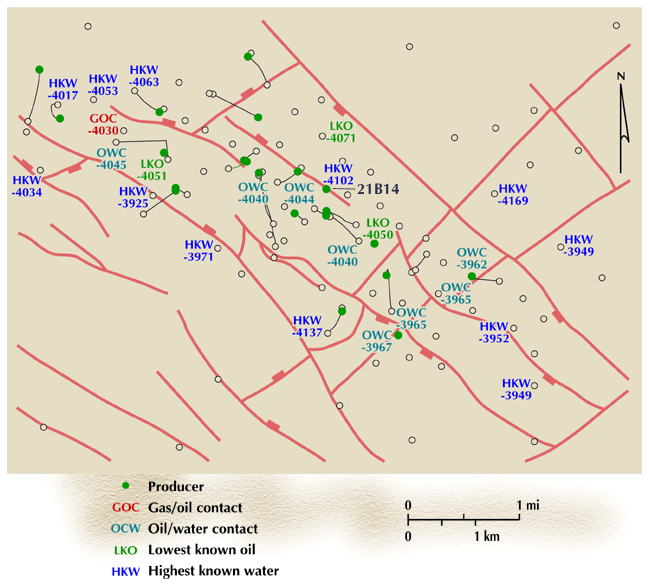
|

|
| ©2000 AGI |

Compartmentalization Exercise
The team stratigrapher has correlated the genetic stratigraphy within a reservoir and has distinguished a genetic unit named MFS90. The geologist subsequently maps the unit and passes the tops onto the geophysicist/structural geologist, who then generates the following map.

The team is now integrating the stratigraphy and structure with fluid-flow trends. One method is to use initial fluid contacts and known production as tools to determine compartmentalization within this genetic unit. The genetic unit was deposited over the entire area and thus could possibly be functioning as one contiguous flow unit. Compare the spatial distribution of oil-water contacts (OWC), lowest known oil (LKO), and highest known water (HKW), and apply the concept of fluid-density segregation when in communication to determine a plausible scenario of compartmentalization to answer the questions below. To review the correct answers, or for additional help, select "Ask the Expert".
- How many oil-bearing reservoir compartments exist in this genetic unit?
- On which side of the fault does well 21B14 seem to be? Select one: a) Northeast, b) Southwest, c) Southeast, 4) In Alaska.
In the exercise
below:
Use the drawing
tool to define faults acting as flow barriers on the map,
Use the drawing tool to define any faults that need to be extended and inferred on the map.